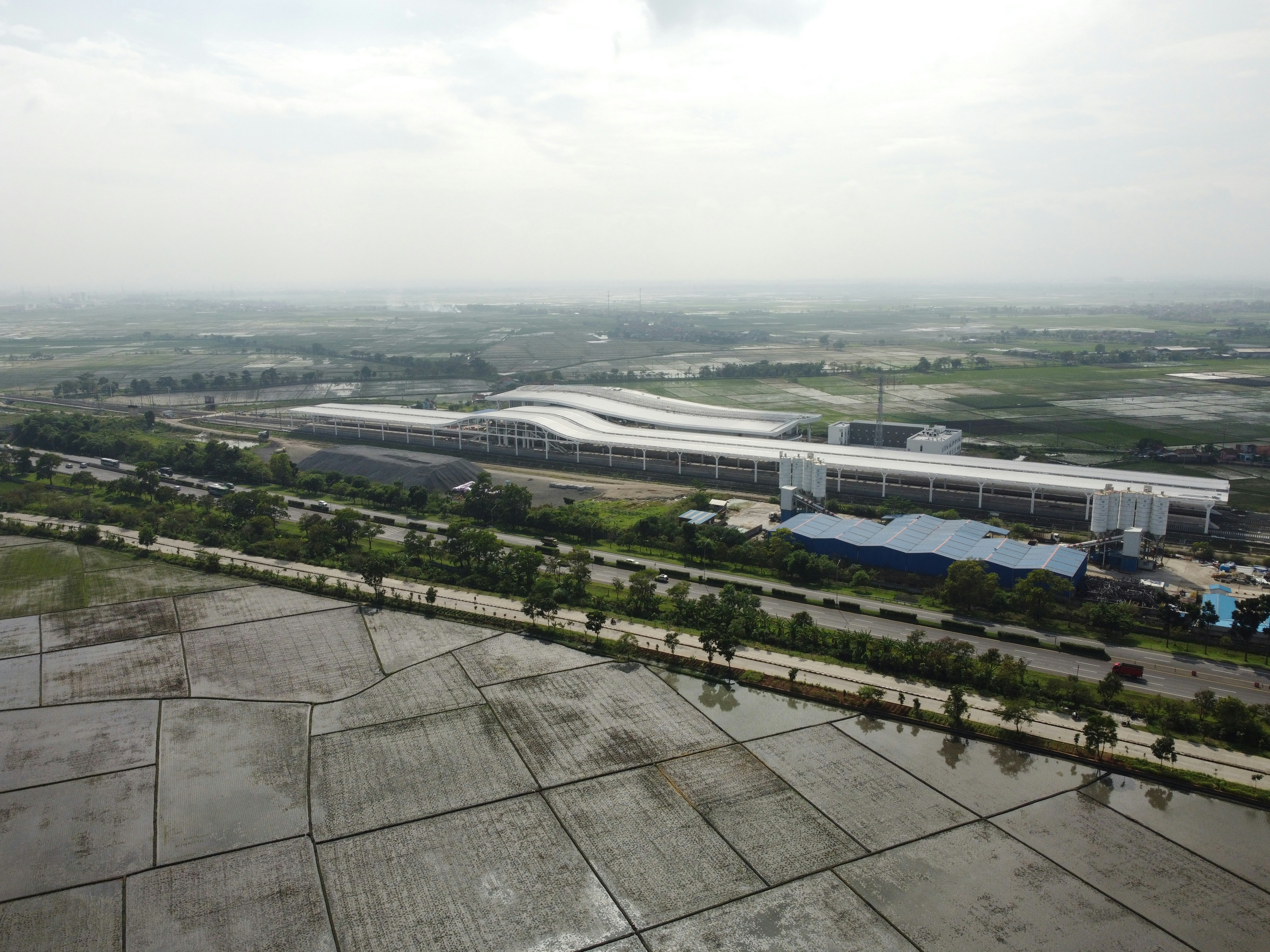
One of the key advantages of peer-to-peer energy sharing networks is the ability to promote sustainability and reduce reliance on traditional energy sources. By facilitating the direct exchange of energy between producers and consumers, these networks encourage the use of renewable energy sources and discourage the consumption of fossil fuels. This not only helps to reduce greenhouse gas emissions and combat climate change but also promotes energy independence and resilience.
Furthermore, P2P energy sharing networks have the potential to address some of the challenges associated with the intermittent nature of renewable energy sources. For instance, solar panels may generate excess energy during peak sunlight hours, while wind turbines may produce more energy during windy periods. Instead of wasting this excess energy or relying on the grid for storage, individuals and communities can now share it with their peers through the network. This not only optimizes the utilization of renewable energy but also helps to stabilize the grid and reduce the need for additional energy storage infrastructure.
Another significant benefit of P2P energy sharing networks is the potential for cost savings. By eliminating the need for intermediaries, such as utility companies, these networks can reduce transaction costs and enable more competitive pricing. Energy producers can set their own prices based on supply and demand, while consumers can choose the most cost-effective energy sources. This promotes transparency and efficiency in the energy market, empowering individuals and communities to make informed decisions about their energy consumption.
Moreover, peer-to-peer energy sharing networks have the potential to foster a sense of community and collaboration. By enabling direct transactions between individuals and communities, these networks encourage cooperation and mutual support. Energy producers can feel a sense of pride and accomplishment knowing that their excess energy is benefiting their peers, while consumers can feel a sense of empowerment and control over their energy choices. This community-driven approach to energy distribution not only strengthens social ties but also promotes the development of local energy markets and stimulates economic growth.
In conclusion, peer-to-peer energy sharing networks offer a transformative solution for energy distribution and management. By leveraging blockchain technology and smart contracts, these networks enable direct transactions between energy producers and consumers, promote sustainability and energy independence, optimize the utilization of renewable energy, reduce costs, and foster community collaboration. As the world transitions towards a more sustainable and decentralized energy system, P2P energy sharing networks have the potential to play a crucial role in shaping the future of energy.
The Rise of P2P Energy Sharing Networks
In recent years, there has been a growing interest in decentralized energy systems that prioritize sustainability and resilience. P2P energy sharing networks have emerged as a key solution to address the challenges of traditional energy distribution models, which often rely on centralized power grids and fossil fuel-based generation.
These networks allow individuals and communities to become active participants in the energy market by generating their own electricity from renewable sources. By leveraging blockchain technology, P2P energy sharing networks enable secure and transparent transactions between energy producers and consumers, ensuring fair compensation for the energy exchanged.
One of the main advantages of P2P energy sharing networks is their ability to increase energy independence. Traditionally, energy consumers have relied on large utility companies for their electricity needs. However, with the rise of distributed generation technologies such as solar panels and wind turbines, individuals and communities can now generate their own electricity. P2P energy sharing networks provide a platform for these energy producers to sell their excess energy to others in the network, reducing their dependence on centralized power grids.
Furthermore, P2P energy sharing networks promote the use of renewable energy sources, which are crucial in the fight against climate change. By allowing individuals and communities to generate their own electricity from renewable sources, these networks help reduce the reliance on fossil fuel-based generation, which is a major contributor to greenhouse gas emissions. The use of blockchain technology ensures that the energy exchanged in these networks comes from verified renewable sources, providing consumers with the assurance that they are supporting clean energy production.
In addition to promoting energy independence and sustainability, P2P energy sharing networks also offer economic benefits. By cutting out the middleman and allowing direct transactions between energy producers and consumers, these networks eliminate the need for costly infrastructure investments and reduce the overall cost of energy. Consumers can purchase energy at a lower price, while energy producers can earn a fair price for their excess energy, creating a win-win situation for all parties involved.
Moreover, P2P energy sharing networks foster a sense of community and collaboration. By enabling individuals and communities to share their excess energy with others in the network, these networks encourage cooperation and create opportunities for local energy trading. This not only strengthens community ties but also promotes the development of resilient and self-sufficient communities that can better withstand disruptions in the centralized energy system.
Overall, P2P energy sharing networks have the potential to revolutionize the way we produce, distribute, and consume energy. By empowering individuals and communities to become active participants in the energy market, these networks promote energy independence, sustainability, and economic benefits. As we continue to transition towards a more decentralized and renewable energy future, P2P energy sharing networks will play a crucial role in shaping the energy landscape of tomorrow.
How P2P Energy Sharing Works
P2P energy sharing networks operate on the principle of decentralization, where energy producers and consumers connect directly without the need for intermediaries. Here’s a step-by-step breakdown of how these networks work:
-
Energy Generation: Energy producers, such as homeowners with solar panels or wind turbines, generate electricity from renewable sources. This excess energy can be shared with others.
-
Smart Metering: Smart meters installed at the producer’s location measure the amount of energy generated and consumed. These meters are connected to the blockchain network, ensuring accurate tracking and verification of energy transactions.
-
Blockchain and Smart Contracts: Blockchain technology and smart contracts facilitate the secure and automated exchange of energy between producers and consumers. Smart contracts are self-executing agreements that automatically trigger the transfer of energy and payment once predefined conditions are met.
-
Peer-to-Peer Transactions: The energy transaction takes place directly between the producer and the consumer, cutting out any intermediaries. The blockchain records and verifies each transaction, ensuring transparency and security.
-
Decentralized Grid: P2P energy sharing networks contribute to the creation of a decentralized grid, where power generation and consumption are distributed across multiple nodes. This reduces dependence on traditional power grids and increases energy resilience.
-
Energy Balancing: P2P energy sharing networks also enable energy balancing by allowing producers to sell their excess energy during peak generation periods and consumers to purchase energy during peak consumption periods. This helps optimize energy usage and reduce wastage.
-
Community Empowerment: P2P energy sharing networks empower local communities by enabling them to become active participants in the energy market. Homeowners with renewable energy systems can monetize their excess energy, while consumers have the freedom to choose clean and sustainable energy sources.
-
Environmental Impact: By facilitating the direct exchange of renewable energy, P2P energy sharing networks have a positive environmental impact. They encourage the adoption of clean energy sources, reduce carbon emissions, and contribute to the transition towards a more sustainable energy future.
The Benefits of P2P Energy Sharing Networks
P2P energy sharing networks offer numerous benefits for both energy producers and consumers. Some of the key advantages include:
-
Energy Independence: P2P energy sharing networks empower individuals and communities to generate their own energy from renewable sources, reducing dependence on centralized power grids and fossil fuels. This shift towards energy independence not only provides individuals with more control over their energy consumption but also contributes to the overall sustainability of the energy system. By generating their own energy, individuals can reduce their carbon footprint and contribute to a cleaner environment.
-
Cost Savings: Consumers can purchase energy directly from producers at competitive prices, bypassing the additional costs associated with traditional energy distribution models. This direct exchange between producers and consumers eliminates the need for intermediaries and reduces the overall cost of energy. Additionally, P2P energy sharing networks enable consumers to choose from a wider range of energy sources, including renewable energy, which can often be more cost-effective in the long run.
-
Sustainability: By promoting the use of renewable energy sources, P2P energy sharing networks contribute to a more sustainable and environmentally friendly energy system. The ability to generate and share energy locally reduces the need for long-distance transmission, minimizing energy losses and reducing the environmental impact of energy production and distribution. Furthermore, the use of renewable energy sources such as solar or wind power reduces reliance on finite fossil fuel resources, ensuring a more sustainable energy future.
-
Resilience: Decentralized energy systems are more resilient to disruptions, such as power outages or natural disasters, as energy can be sourced locally from multiple producers. In traditional energy systems, power outages can have far-reaching consequences, affecting entire regions or even countries. However, in a P2P energy sharing network, if one producer experiences an outage, others can step in and supply energy to the local community, ensuring a more reliable and resilient energy supply.
-
Community Building: P2P energy sharing networks foster a sense of community by encouraging collaboration and cooperation among energy producers and consumers. These networks often involve the formation of local energy communities where participants can share knowledge, resources, and experiences related to energy production and consumption. This sense of community not only strengthens social ties but also facilitates the exchange of ideas and innovations, leading to further advancements in renewable energy technologies and practices.
Challenges and Future Outlook
While P2P energy sharing networks hold great promise, they also face certain challenges that need to be addressed for widespread adoption. Some of these challenges include:
-
Regulatory Frameworks: Existing energy regulations may not be well-equipped to handle the complexities of P2P energy sharing networks. Governments and regulatory bodies need to create a supportive framework to encourage the growth of these networks.
-
Infrastructure Requirements: The implementation of P2P energy sharing networks requires the installation of smart meters, blockchain infrastructure, and communication networks. Upgrading existing infrastructure can be a significant investment.
-
Technical Limitations: Scalability and interoperability issues need to be addressed to ensure the seamless integration of P2P energy sharing networks with existing energy systems. This includes developing standardized protocols and communication interfaces that allow different systems to communicate and share energy efficiently.
-
Consumer Awareness: Educating consumers about the benefits and functionality of P2P energy sharing networks is crucial for their widespread adoption. Increased awareness can drive demand and encourage more individuals to participate in these networks. This can be achieved through public awareness campaigns, educational programs, and partnerships with utilities and energy providers to promote the benefits of P2P energy sharing.
-
Security and Privacy: As P2P energy sharing networks involve the exchange of sensitive data and financial transactions, ensuring robust security measures and protecting user privacy is paramount. This includes implementing encryption technologies, secure authentication methods, and transparent data handling practices.
Despite these challenges, the future outlook for P2P energy sharing networks is promising. As technology continues to advance and awareness grows, we can expect to see increased adoption of these networks, leading to a more sustainable and decentralized energy system. With the integration of renewable energy sources, such as solar panels and wind turbines, P2P energy sharing networks can help reduce carbon emissions and promote a greener future. Additionally, the potential for cost savings and energy independence makes these networks attractive to both consumers and businesses.
In the coming years, we can anticipate further innovation in P2P energy sharing networks, such as the integration of artificial intelligence and machine learning algorithms to optimize energy distribution and manage supply-demand imbalances. This would enable more efficient utilization of renewable energy resources and better match energy production with consumption patterns.
Furthermore, the development of peer-to-peer trading platforms and marketplaces can create new opportunities for energy producers and consumers to buy and sell energy directly, bypassing traditional intermediaries. This can lead to a more competitive and transparent energy market, empowering individuals and communities to take control of their energy choices.
In conclusion, while there are challenges to overcome, the future of P2P energy sharing networks looks promising. With the right regulatory support, technological advancements, and increased consumer awareness, these networks have the potential to revolutionize the energy sector, fostering a more sustainable, decentralized, and consumer-centric energy system.

Introduction to Smart Grid Technology: Enhancing Efficiency, Reliability, and Sustainability in Electrical Grids
The World of Smart Materials: Properties,Types,Behaviors Prospects
AI for Social Good: Leveraging Artificial Intelligence to Address Societal Challenges and Promote Positive Outcomes
The General Data Protection Regulation (GDPR): A Comprehensive Guide to Data Privacy and Protection

Implementing Machine Learning Operations (MLOps): Streamlining Model Deployment and Management for Success
The API Economy: Enabling Seamless Communication and Data Exchange

DevOps: Streamlining Software Development and Operations for Efficient Delivery







